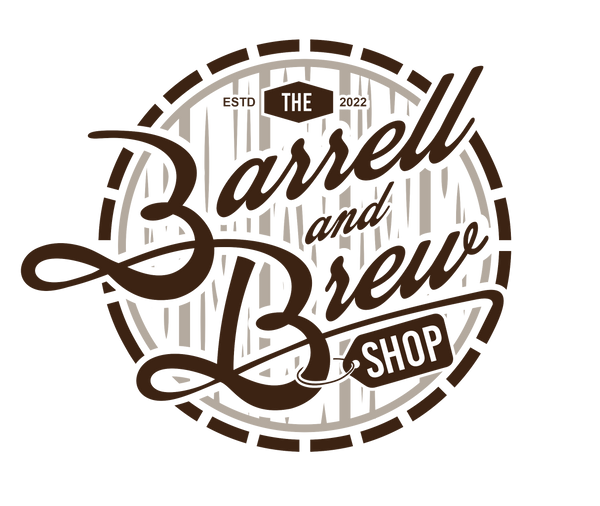Local Dutch beer styles
Although the Netherlands is known worldwide for its’ easy-drinking lager beers, there’s plenty of variety on offer at your local Dutch bottle shop. Here’s a trio of local Dutch beer styles to keep an eye out for.
Bokbier
Bock beers originally come from Germany, and they tend to be darker and strong in taste. The Dutch variants has a distinctly seasonal component, meaning that there’s two major releases of bock beers per year in the Netherlands. Creatively, the Dutch bocks refer to the season they’re produced for: the Lentebok (the spring bock) and the Herfstbok (the autumn bock). The Lentebok is the lighter and hoppier of the pair, though it’s still fairly malt-forward and tastes a bit like bread. Herfstboks are dark and malty, often featuring notes of toast and nuts.

Seasonal bocks are quite popular among Dutch beer drinkers. Most breweries (from tiny microbreweries to huge industrial breweries) release bocks seasonally, so don’t be surprised to see a glut of bocks on the shelves of your local Albert Heijn in the spring and autumn. Lenteboks are best served in a goblet, while herfstboks are suited well to a tulip glass.
A couple of common lenteboks are:
- Lentebok/Andre by De Prael (Amsterdam, Noord-Holland)
- Lentebock by Brouwerij Emelisse (Goes, Zeeland)
Some typical Dutch herfstbok beers include:
- Bock by Texels (Oudeschild, Noord-Holland)
- Eigenzinnige Herfstbok by BE+ER (Haarlemmermeer, Noord-Holland)
Gruit
The word ‘gruit’ refers to an herbal mixture that goes into a beer. Using gruit was a method for altering a beer’s flavor before brewers shifted towards hops. Common ingredients in historical Dutch gruit beers include bog myrtle, wild rosemary, and bay laurel.

Gruit producers are now few and far between, with only a handful of brewers trying this historical Dutch beer style. While some modern interpretations of gruit occasionally mix up the history of gruit with its’ hop-laden descendants, the idea of using spices and botanicals to imbue a beer with flavor is a key part of Dutch beer history.
A few modern takes on gruit include:
- Koyt Gruitbier by Jopen (Haarlem, Noord-Holland)
- Most Wonderful Time for a Beer by Uiltje Brewing Company (Haarlem, Noord-Holland)
- Weder by Nevel (Nijmegen, Gelderland)
Witbier
Originating in neighboring Belgium, the witbier (literally, white beer; sometimes called a Belgian white ale in English) uses unmalted wheat. Witbier is also a bit of a cultural reference to the gruit of old, as it incorporates coriander and orange peel. The end result is full of orange and vanilla with a finish that is both sweet and sour.

Witbiers typically come in one of two glasses: a tulip glass (as with many ales from Belgium) or a vase (as with witbier’s German cousin, the Hefeweizen). A critical part of serving a witbier properly is the setting; as the mercury rises in the summer, the more likely you are to see your neighbor’s enjoying a refreshing witbier on a sunny terrace.
Some of the best Dutch witbiers include:
- IJwit by Brouwerij ‘t IJ (Amsterdam, Noord-Holland)
- White Ale by Lowlander (Amsterdam, Noord-Holland)
- Witte Trappist by La Trappe (Berkel-Enschot, Limburg)
Dutch craft beer
Tradition in brewing isn’t the ultimate sign of quality for Dutch beer drinkers. As a result, breweries in the Netherlands feel unencumbered when it comes to how they brew. Where Czech or German beer is steeped in tradition, Dutch beer is renowned less for producing a limited number of styles well and more for experimenting with trends.
The Dutch beer industry has come a long way since 2010 when there were only about 70 breweries; while industrial producers loom large over the market, you’d be hard-pressed to find any café in the Netherlands that doesn’t have at least one independent craft offering.

As with other countries with a bubbling craft beer scene, IPAs are trendy despite reports to the contrary. Dutch breweries are no different, often throwing liberal amounts of hops into their brew kettles to the benefit of drinkers that like bitter beers. But for a country where growing hops is possible but uncommon, the Netherlands doesn’t have a sole focus on IPAs. Other popular beer styles with Dutch drinkers include imperial stouts, blonde beers, and beers brewed with wild fermentation.
A few of the most intriguing Dutch craft breweries are:
- Brouwerij De Molen (Bodegraven, Zuid-Holland)
- Butcher’s Tears (Amsterdam, Noord-Holland)
- De Moersleutel (Alkmaar, Noord-Holland)
- Nevel Artisan Ales (Nijmegen, Gelderland)
- Uiltje Brewing Company (Haarlem, Noord-Holland)
- Van Moll (Eindhoven, Noord-Brabant)
Beyond microbreweries, there’s a bustling homebrewing scene in the Netherlands as well. Brewing your own beer is legal as long as you don’t sell it. There isn’t a massive variety in homebrewing supply stores in the Netherlands, but the ones that exist have extensive offerings; Braumarkt in Almere is one such example. Homebrewing groups (such as Foebar in Amsterdam) are also available for homebrewers looking to share tips and tipples in a more social environment.

